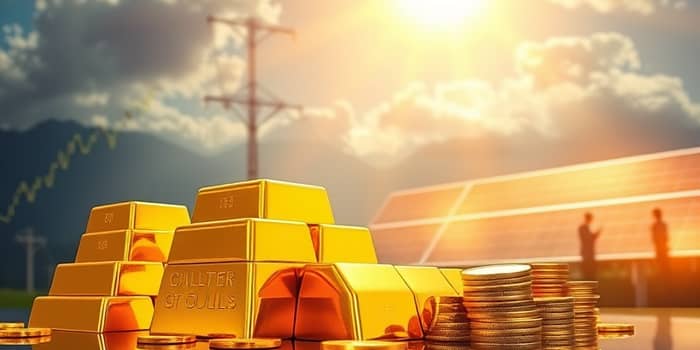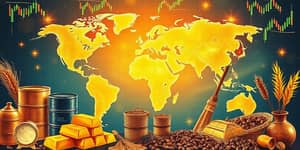
In a world of economic uncertainty and shifting markets, precious metals continue to shine as a cornerstone of a balanced portfolio. As investors search for stability and growth, gold and silver remain two of the most enduring choices.
From record highs in multiple currencies to surging industrial demand, the story of gold and silver in 2025 is one of opportunity, resilience, and transformation.
Precious metals have long been revered as stores of value. Unlike fiat currencies, gold and silver possess intrinsic worth rooted in centuries of cultural, economic, and industrial significance. In early 2025, gold reached record highs in major currencies, cementing its role as the “ultimate safe haven.” Meanwhile, silver’s quarter-one surge of 17% demonstrated its dynamic potential.
While gold is prized for stability, silver offers a unique blend of monetary appeal and industrial utility. Together, they provide investors with diversification benefits and growth potential.
Several powerful forces propel gold’s trajectory in 2025. Central banks across the globe continue to accumulate gold reserves, reflecting a strategic move to diversify away from fiat currencies. This trend of sustained central bank accumulation has underpinned gold’s recent climb.
Additionally, rising inflation and currency depreciation erode purchasing power, motivating investors to seek refuge in tangible assets. Demand from Eastern markets such as China and India remains robust, further bolstered by cultural affinity and long-term saving traditions. Potential interest rate cuts by major central banks later this year could provide additional tailwinds for gold prices.
Silver’s outlook in 2025 is equally compelling, albeit driven by a different blend of factors. Industrial demand, particularly from the solar energy sector, is expected to consume up to 98% of known silver reserves by 2050. This sustained green technology demand positions silver as a critical component of the energy transition.
Beyond renewables, silver plays a vital role in electronics, electric vehicles, and advanced manufacturing. Combined with lower global interest rates, these trends encourage both institutional and retail investment. Notably, Russia’s announcement to purchase $535 million in silver underscores a growing recognition of silver’s strategic importance.
Investors seeking exposure to gold and silver have multiple avenues, each with distinct advantages and considerations. Physical ownership grants tangible security but comes with storage and insurance costs. Alternatively, exchange-traded funds provide liquidity without the burden of storage, though some may face higher tax rates.
When selecting an investment vehicle, consider your risk tolerance, time horizon, and tax implications. A balanced approach often combines several methods to optimize both security and growth.
The ideal allocation to precious metals depends on individual goals. For conservative investors prioritizing capital preservation, a modest allocation can hedge against volatility. Those seeking higher growth might tilt toward silver, accepting greater price fluctuations for the potential of outsized returns.
Whichever strategy you choose, maintaining discipline and reviewing allocations periodically is key to navigating market cycles successfully.
The outlook for gold and silver in the coming years remains bright. Gold’s role as an inflation hedge and safe-haven asset is unlikely to diminish, supported by central bank demand and persistent economic uncertainty. Silver’s bull run, fueled by green energy and technological adoption, may propel prices past $40/oz mid-year.
Supply constraints on new mining projects could intensify the supply-demand imbalance for silver, while ongoing digitalization and climate initiatives further entrench industrial usage. Both metals offer powerful diversification and wealth preservation in an evolving global economy.
Whether you are a seasoned investor or just beginning, gold and silver present a compelling case for inclusion in a diversified strategy. Their unique attributes—stability, growth potential, and cultural significance—continue to captivate markets worldwide.
By understanding market drivers, selecting suitable investment vehicles, and adopting thoughtful allocation strategies, you can harness the enduring power of precious metals to pursue financial goals with confidence.
References













